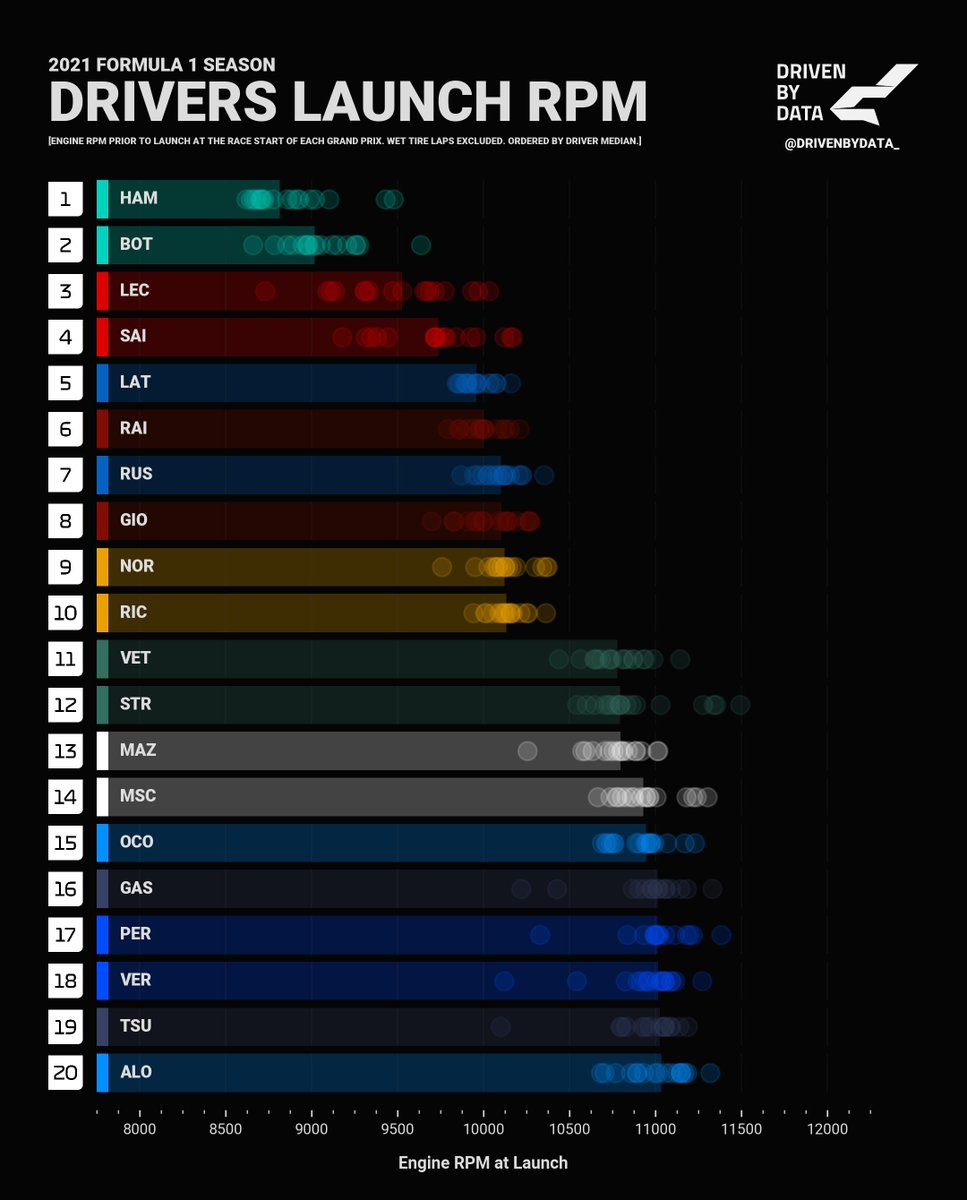
Pre-race procedures 📋
Fernando Alonso's pre-grid and formation lap routine at the 2022 Australian Grand Prix: a thread 🧵
#DrivenByData #F1 #Formula1
Fernando Alonso's pre-grid and formation lap routine at the 2022 Australian Grand Prix: a thread 🧵
#DrivenByData #F1 #Formula1

Systems check
As a mechanic attaches the steering wheel to the steering column, Alonso ensures that the quick-release mechanism is locked and the wheel fixed in place. He then pulls and releases the clutch twice in order to verify that the paddle is working as intended.
As a mechanic attaches the steering wheel to the steering column, Alonso ensures that the quick-release mechanism is locked and the wheel fixed in place. He then pulls and releases the clutch twice in order to verify that the paddle is working as intended.
Clutch release practice
A common exercise on the pre-grid, practicing the motion of releasing the clutch serves to build/retain muscle memory in getting to the clutch bite point as soon as possible, a big part of getting off the line well.
A common exercise on the pre-grid, practicing the motion of releasing the clutch serves to build/retain muscle memory in getting to the clutch bite point as soon as possible, a big part of getting off the line well.
An interesting detail:
The clutch release dash-page reveals a target paddle position of 38%. This is what Alonso will be aiming for as he drops the clutch to launch from a standstill, affording him optimal jump off the line without getting wheelspin.
The clutch release dash-page reveals a target paddle position of 38%. This is what Alonso will be aiming for as he drops the clutch to launch from a standstill, affording him optimal jump off the line without getting wheelspin.
Enabling pit speed limiter
While doing a practice start is allowed when leaving the pre-grid for the formation lap, the FIA Sporting Regulations state that cars may not exceed the pit lane speed limit until they've gone by the pole position grid box.
While doing a practice start is allowed when leaving the pre-grid for the formation lap, the FIA Sporting Regulations state that cars may not exceed the pit lane speed limit until they've gone by the pole position grid box.
Bite point find
Alonso carries out a 'clutch bite point find', a program that calibrates the clutch so the bite point, (the point at which the car begins to creep forward during clutch release), occurs at a predetermined position of the clutch paddle.
Alonso carries out a 'clutch bite point find', a program that calibrates the clutch so the bite point, (the point at which the car begins to creep forward during clutch release), occurs at a predetermined position of the clutch paddle.
This improves launch performance by correcting for temperature, wear, etc., allowing the driver to optimally preload the clutch before launch, minimizing excess clutch-slip while also reducing the risk of incurring a penalty by creeping forward before the lights go out.
'Mode BURN'
From the exit of the final corner, as he approaches the grid, Alonso performs four burnouts. For the last three of those, he simultaneously holds the orange 'BO'-button on the steering wheel, enabling 'Mode BURN'.
From the exit of the final corner, as he approaches the grid, Alonso performs four burnouts. For the last three of those, he simultaneously holds the orange 'BO'-button on the steering wheel, enabling 'Mode BURN'.
This mode (presumably) locks together the differential to ensure that both of the rear tires are heated equally. This alleviates the risk of one wheel spinning up more than the other, resulting in an unwanted temperature split between the two rear tires.
Brake bias adjustment
Alonso selects an offset of '-1.0%' from the default brake bias setting. This offsets the distribution of brake pressure rearwards, a common approach to reduce the risk of lock-ups, particularly into turn 1 where tires may not yet be fully up to temperature.
Alonso selects an offset of '-1.0%' from the default brake bias setting. This offsets the distribution of brake pressure rearwards, a common approach to reduce the risk of lock-ups, particularly into turn 1 where tires may not yet be fully up to temperature.
One final bite point find before race start
While waiting for the last cars to join the grid, Alonso performs a final bite point find followed by a clutch release practice just as the start lights come on.
While waiting for the last cars to join the grid, Alonso performs a final bite point find followed by a clutch release practice just as the start lights come on.
Finally, as the lights go out, Alonso releases his clutch, as practiced, to launch off the line and start the 2022 Australian Grand Prix.
• • •
Missing some Tweet in this thread? You can try to
force a refresh










